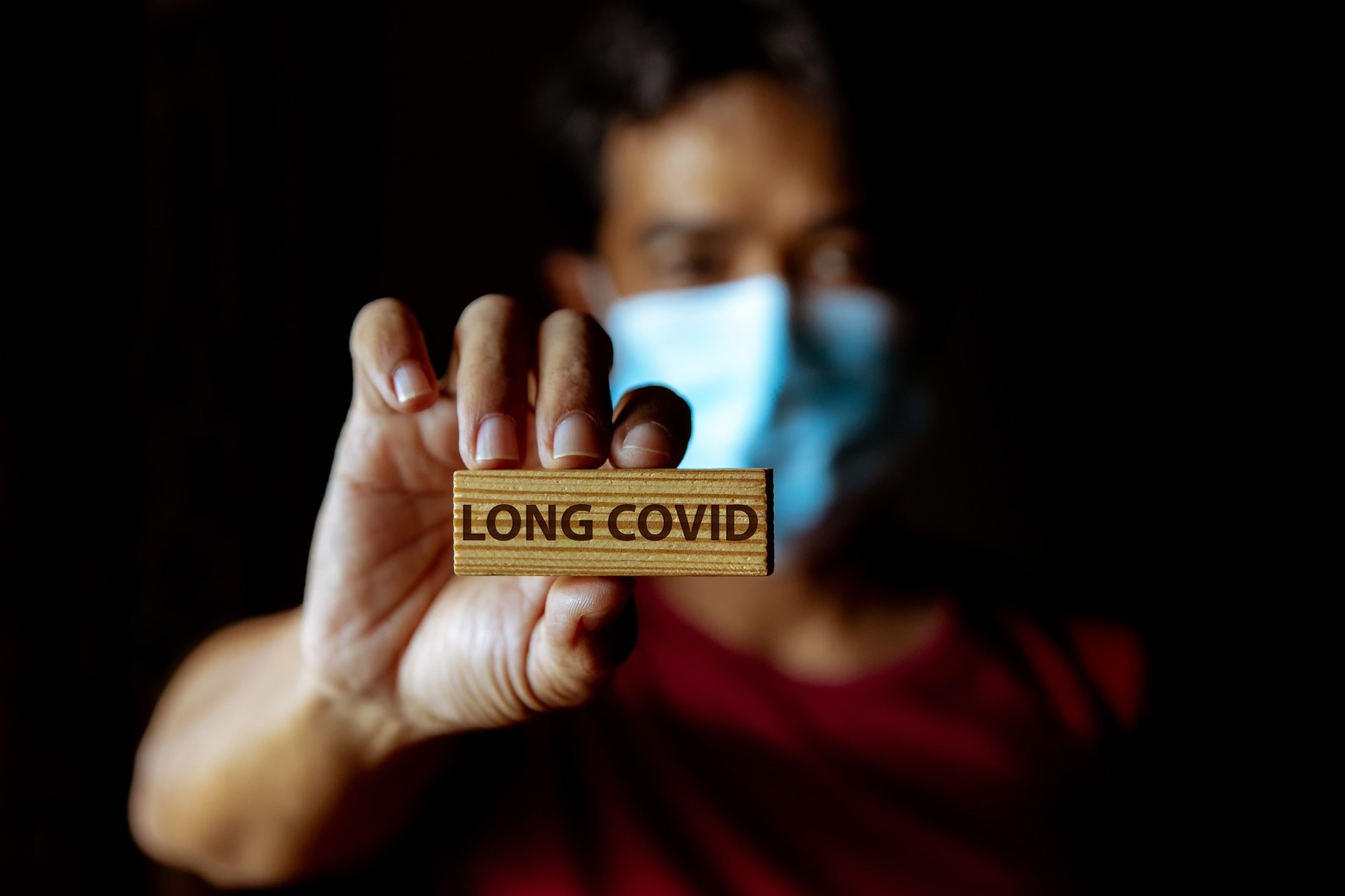In a recent study published in the journal JAMA Network Open, researchers in the United States estimated the sociodemographic factors associated with and prevalence of post-acute coronavirus disease 2019 (COVID-19) symptom sequelae (PASC) or long COVID (LCOVID). They also assessed the association of vaccination status and dominant strain at the time of severe acute respiratory syndrome coronavirus 2 (SARS-CoV-2) infection with the risk of LCOVID development.
LCOVID or COVID-19 symptom persistence beyond two months of acute COVID-19 has been identified by the World Health Organization (WHO) as a commonly occurring sequela of COVID-19. However, multiple LCOVID aspects have not been understood completely, with studies indicating that LCOVID may be an amalgamated presentation of several syndromes. Notably, data on the profiles of individuals who would completely recover from acute COVID-19 and those who would experience LCOVID are lacking.
 Study: Prevalence and Correlates of Long COVID Symptoms Among US Adults. Image Credit: Anucha Naisuntorn / Shutterstock
Study: Prevalence and Correlates of Long COVID Symptoms Among US Adults. Image Credit: Anucha Naisuntorn / Shutterstock
About the study
In the present study, researchers evaluated the prevalence and the correlates of LCOVD symptoms among adult residents of the United States (US).
Data of adults residing in any of the 50 US states and the District of Columbia were obtained from eight internet survey waves from the COVID States project. They were analyzed between 5 February 2021 and 6 July 2022. Socioeconomic demographical data was self-reported by the study participants, whereas data on the ethnicities and races were obtained from five categories of the US Census to ensure that all races and ethnicities were represented.
Representative demographical quotas were applied to balance the sex, age, ethnicity, race, and geographical distributions of the study participants. The prime study measures and outcomes included LCOVID among participants with self-documented SARS-CoV-2 positive antigen test or PCR (polymerase chain reaction) analysis reports.
Non-probability sampling was used to determine the sample population as a cost-effective alternative to conventional survey methods. The dominant SARS-CoV-2 strain at the time of SARS-CoV-2 infection was based on the CoVariants study data from the GISAID (global initiative on sharing avian influenza data) database. Logistic regression modeling was used for the analysis, and the adjusted odds ratios (OR) were calculated.
Results
A total of 16,091 individuals responded to the survey. The average age of the respondents with self-reported antigen test/PCR-confirmed SARS-CoV-2 infections ≥2.0 months before the study was 41 years, and most (63%, n=10,075) were females. Among the participants, five percent (n=817), 11% (n=1,826), 10% (n=1,546), and 71% (n=11,425) were Asians, Blacks, Hispanics, and Whites, respectively.
Fatigue was the most commonly reported symptom (52%, n=1232) by the survey respondents, followed by smell loss (44%), shortness of breath (40%), and brain fog (40%). Females showed a significantly greater likelihood than males of reporting smell loss (46% versus 35%) and cognitive LCOVID symptoms (49% versus 36%), anxiety (31% versus 22%), and sleep disruptions (32% versus 23%).
The frequency of reporting anosmia was lower for SARS-CoV-2 infections during Omicron strain dominance (34%) than during Alpha strain (40%) and Delta strain (51%) dominance. Among the study cohort, 15% (n=2,359) of participants reported LCOVID, representing two percent of the US adult population.
The population-weighted estimates showed that 0.7% of the sampled population reported cognitive LCOVID symptoms, which included six percent of individuals with a prior SARS-CoV-2-positive report. In addition, the age beyond 40 years (OR 1.2) and the female sex (OR, 1.9) were linked to a higher LCOVID persistence risk, whereas graduate-level educational status versus high schooling or lesser education (OR, 0.7) and urban-type residence (OR 0.7) were associated with lower odds of LCOVID persistence.
Compared with the ancestral SARS-CoV-2 strain infections, infections during the Epsilon strain (OR 0.8) or Omicron strain dominance (OR 0.8) were associated with lower odds of LCOVID development. Full (double-dose) vaccination before acute SARS-CoV-2 infections were associated with lower LCOVID risks (OR 0.7), whereas partial (single-dose) did not significantly lower LCOVID risks (OR 0.9). Similar results were obtained after excluding data from SARS-CoV-2 infections occurring before January 2021
Non-linear modeling showed maximal LCOVID liability for individuals aged between 50 years and 59 years in comparison to those aged between 18 and 29 years (OR 2.4). After limiting the analysis to 12,441 individuals who tested SARS-CoV-2-positive ≥0.5 years previously, 15% (n=1,843) reported persistent symptoms of COVID-19. Of 7,462 individuals who tested SARS-CoV-2-positive ≥1.0 year previously, 15% (n=1,135) reported persistent COVID-19 symptoms.
Overall, the study findings showed that LCOVID was prevalent in the US and associated with older age and the female sex and that the completion of prime COVID-19 vaccinations before SARS-CoV-2 infection could reduce LCOVID risks.